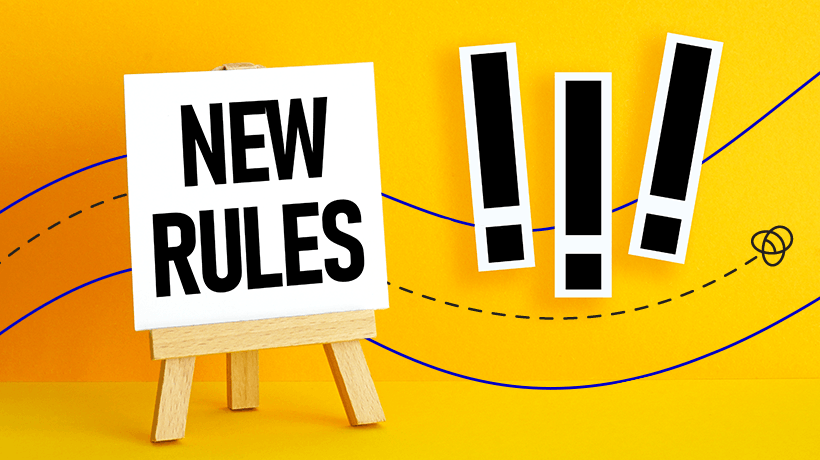Adaptive Learning In Corporate Training
Adaptive learning has moved from being a niche academic idea to a core expectation in modern corporate eLearning. Once used mainly in K-12 and higher education, adaptive techniques are now redefining how employees learn, not by giving them more content, but by delivering only what matters most to them.
Yet “adaptive” is not one thing. It’s a continuum of design strategies, each balancing personalization, engagement, and compliance assurance differently.
Below are the key adaptive models: how they work, what problems they solve, and how they can be blended into a unified learning experience.
Ways To Implement Adaptive Training
1. Diagnostic And Branching Scenario Design
The simplest adaptive learning model starts with a diagnostic pre-test that gauges prior knowledge and unlocks or skips relevant modules. Learners demonstrate competence before diving into the content, while those who struggle take the full journey.
- How it works: 10–12 questions from a randomized bank determine mastery per topic.
- Adaptive mechanism: Learners skip mastered sections or receive quick refreshers before continuing.
- Best for: Compliance and certification courses where completion time can legitimately vary.
- Why it works: Respects learner expertise and avoids wasting time on known material.
2. Immersive Integrated Diagnostic
A more sophisticated approach blends the diagnostic right into the story. Instead of a quiz, learners start making decisions in a realistic scenario, and their choices double as diagnostic data.
- How it works: Each decision updates the learner’s mastery probability (using Bayesian knowledge tracing logic).
- Adaptive mechanism: The course adjusts difficulty and inserts micro-coaching scenes based on in-story performance.
- Best for: Behavioral training where engagement and realism matter more than speed.
- Why it works: Learners feel immersed, not tested. The adaptive layer operates invisibly under the narrative.
3. Bayesian Knowledge Tracing: Precision Adaptivity
Originating at Carnegie Mellon, Bayesian knowledge tracing (BKT) treats every skill as a probability model. After each learner action, the system recalculates the likelihood that the skill is mastered.
- Core parameters: Learn, guess, slip, and transition probabilities.
- Adaptation logic: If P(Learned) > 0.95 → retire the skill, move to advanced content. If P(Learned) < 0.6 → deliver scaffolded practice or micro-hints.
- Why it matters: Enables granular tracking of competence far beyond simple right/wrong scoring.
4. Item Response Theory: Maintaining The Flow Zone
Popularized by Duolingo, item response theory (IRT) keeps learners in a state of optimal challenge: not bored, not overwhelmed. It adjusts the difficulty of each question or scenario based on recent performance.
- Core idea: Every item has a difficulty value on a logit scale (−3 to +3).
- Adaptation logic: Wrong answer → drop difficulty by 0.5 logits and schedule review. Three correct → raise by 0.7 logits and advance.
- Why it matters: Creates a “flow ladder.” Learners stay engaged because each next task feels achievable but not trivial.
5. Interest-Driven “Choose-Your-Quest” Model
This approach personalizes the context, not just the content. Learners choose thematic storylines that appeal to their interests or roles, all mapped to the same learning outcomes.
- Example: A compliance training course offers three quests: “Trade Show Negotiations,” “Distributor Pricing,” or “Market Research Abroad.”
- How it works: All teach the same legal principles, but with different aesthetics and dialogue.
- Why it matters: Relevance drives motivation. Adults engage when they see themselves in the story.
6. Micro-Competency “Skill Tree”
Inspired by CodeCombat and Khan Academy, this model visualizes learning progress as a competency map. Each node represents a micro-skill; when mastered, it “lights up,” unlocking dependent skills.
- How it works: Each skill gate has a short “prove it” challenge. Passing lights the node; failing triggers a mini-tutorial.
- Why it matters: Makes progress visible and measurable.
- Corporate advantage: Serves as both a motivational tool and an audit record; perfect for compliance frameworks like DHL’s.
7. Implementation In Real Systems
You don’t need an AI lab to deploy adaptive learning. Authoring tools like Articulate Storyline or Adapt Framework can integrate JavaScript-based BKT/IRT controllers. Tracking can be done via SCORM 1.2 and xAPI.
Image by CommLab India
8. The Immersive Adaptive Hybrid (v2.0)
The most advanced approach blends the above into a two-tier structure:
Tier 1 – Diagnostic Assessment (Time Saver): A randomized pre-assessment determines which chapters the learner must complete. Experts may finish in 12–15 minutes; novices take the full 30.
Tier 2 – Immersive Adaptive Storyline (Engagement Booster): Within the unskipped sections, Bayesian and IRT logic personalize feedback, challenge level, and micro-coaching.
Skill Tree Overlay: Each key behavior (e.g., “Recognize Collusion,” “Escalate Concerns”) has a visible mastery indicator.
Reinforcement Layer: One-week and one-month micro-scenarios reinforce weak areas—adaptive beyond the course itself.
9. The Compliance Paradox: Adaptivity Without Risk
In most compliance contexts, regulators require uniform exposure to key messages. You can’t let people skip the core legal warnings. Therefore, true time savings come only from skipping non-critical content, not the policy statements themselves.
Image by CommLab India
10. Where Adaptive Training Is Headed
Next-generation adaptive systems will integrate AI-driven behavior modeling: sentiment detection, predictive pathing, and continuous learning loops linking course performance to on-the-job behavior. The adaptive course of tomorrow won’t just save time; it will map learning to business risk.
Adaptive Training: The Bottom Line
Adaptive learning began as a way to shorten courses. Its real value lies in precision, focusing each learner’s time and attention exactly where it changes behavior. For organizations like DHL, that means a compliance course that feels alive, challenging experts, guiding novices, and proving, through data, that every employee not only completed training but truly understood it.
CommLab India
Since 2000, CommLab India has been helping global organizations deliver impactful training. We provide rapid solutions in eLearning, microlearning, video development, and translations to optimize budgets, meet timelines, and boost ROI.




